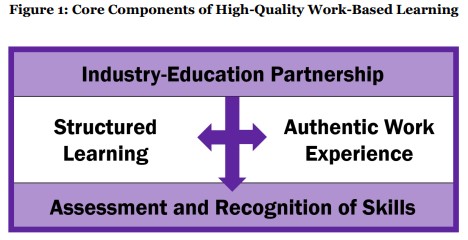Executive Summary

The outlook for high school graduates who have no postsecondary or industry-recognized credentials can appear bleak. Today, it is critical that young people obtain at least some training beyond high school to succeed in the job market. States bear a cost, too, when this is not achieved: They have a less skilled workforce to attract business investment and must allocate limited federal and state resources to more social services for their unemployed and underemployed youth.
That’s why governors are considering youth apprenticeship to connect more young people to career paths at an earlier age, while at the same time filling businesses’ unmet workforce needs. Youth apprenticeship offers paid, hands-on work experience and related classroom instruction that result in postsecondary or industry-recognized credentials. Youth apprenticeship programs often remain underused, especially in high-growth, white-collar industries, but governors are exploring ways to guide development and expansion of these programs.
This white paper explores three strategies that governors can use to expand youth apprenticeship:
- • Act as a public champion by setting a statewide vision and convening stakeholders to collaboratively implement that vision.
- • Allocate and use dedicated funding to start and expand programs that support youth apprentices and guide them through their career pathways.
- • Implement policies that provide long-term support for high-quality youth apprenticeship programs.
The governors of Colorado, Kentucky, Maryland and North Carolina have used these strategies to successfully develop and expand youth apprenticeship in their states. These states are highlighted in the case studies presented in this paper, which offer insights to inform other governors’ efforts to expand youth apprenticeship and further connect high school education to workforce preparation and high-quality employment opportunities.
The National Governors Association Center for Best Practices (NGA Center) is a member of the Partnership to Advance Youth Apprenticeship (PAYA), created by New America. In 2018, PAYA launched a multiyear collaborative initiative that supports efforts in states and cities to expand access to highquality apprenticeship opportunities for more high school youth. PAYA aims to improve public understanding and awareness of high-quality youth apprenticeship, inform learning across the country by sharing best practices about the conditions and strategies needed for successful and sustainable youth apprenticeship partnerships, and support the growth of high-quality youth apprenticeship. As part of its participation in this initiative, the NGA Center has produced this white paper based on insights and best practices identified in states during the first year of the initiative and on independent research.












